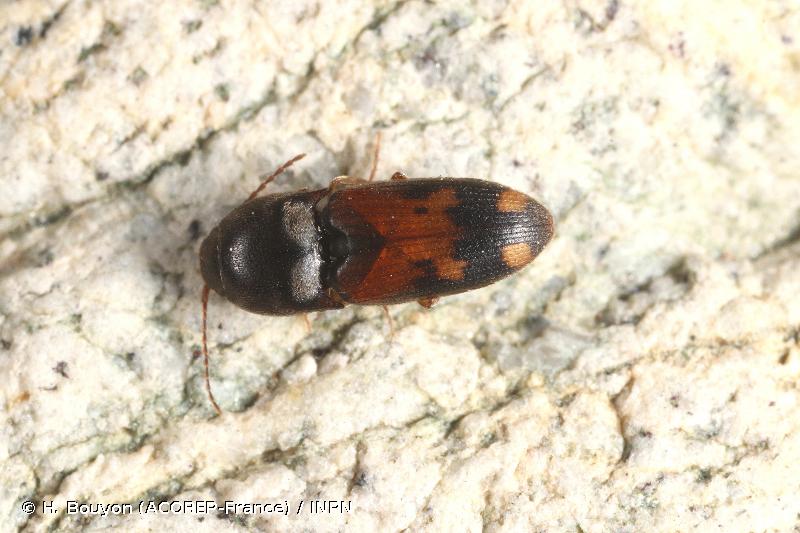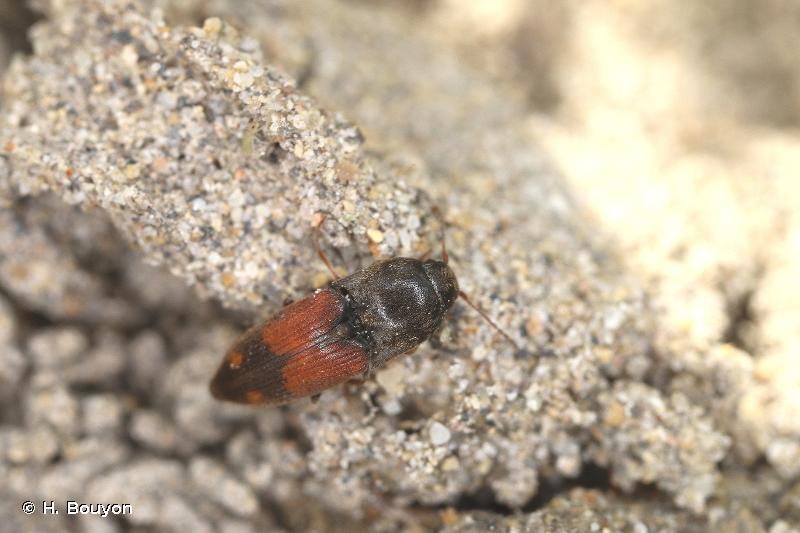
cd_nom

| Author : H. Bouyon (ACOREP-France) / INPN |
 |
To get the picture, please visit:
Any reuse of one or more photographs on this site is subject to an authorization request from the author.
Link to the Code of Intellectual Property (Legifrance)

| Author : A. Artero |
 |
To get the picture, please visit:
Armel Artero
inpn@mnhn.fr
Any reuse of one or more photographs on this site is subject to an authorization request from the author.
Link to the Code of Intellectual Property (Legifrance)

| Author : H. Bouyon |
 |
To get the picture, please visit:
Hervé BOUYON
email : herve.bouyon@wanadoo.fr
Any reuse of one or more photographs on this site is subject to an authorization request from the author.
Link to the Code of Intellectual Property (Legifrance)
Taille : 4-6 mm.
Diagnose :
Corps allongé, convexe, avant-corps noir avec parfois les pointes postérieures du pronotum rougeâtres. Les élytres sont brun-orangés avec un dessin noir variable, pouvant en envahir la totalité. La pubescence claire assez longue donne un aspect soyeux à toute la face supérieure. Les antennes courtes et robustes dépassent à peine le bord postérieur du pronotum qui est très convexe. Les griffes portent une longue soie basale mais le 4ème article tarsal n'est pas lamellé.
La larve est filiforme et cylindrique (de type "ver fil-de-fer"), jaune orangée avec la tête et le dernier segment plus colorés.
Identification : Difficile.
Confusions possibles :
Aeoloderma crucifer, de même stature et de même mode de vie, a le pronotum toujours en partie clair.
Périodes d'observation (adultes) :
Avril à octobre mais peut être trouvé toute l'année en hibernation sous les écorces déhiscentes ou sous les détritus végétaux.
Biologie-éthologie :
La larve est terricole de même que l'adulte qui se dissimule sous les pierres et les débris végétaux.
Biogéographie-écologie :
Milieux ouverts d'Europe centrale et méridionale, d'Asie Mineure et d'Asie Centrale.
Références :
Leseigneur L., 1972. Coléoptères Elateridae de la faune de France continentale et de Corse. Bulletin mensuel de la Société Linnéenne de Lyon (supplément au numéro de février 1972) 41 : 1-381.
Hervé Bouyon(),2020
Continental
Metropolitan France
Overseas
Marine
Metropolitan France
Overseas
The map presents a summary at the 10 x 10 km grid of the observation data for the species transmitted to the SINP. These data have been subjected to validation filters.
The map presents a reference distribution layer of the species at the scale of departments and marine sectors. The presence and absence data were established by expertise within a network of partners. This reference distribution is used in the validation process of the SINP data at the INPN level.
Corresponds to a report on the basis of at least one observation proved within a period of 10 years (20 years for little-known invertebrates) preceding the year and no presumption of extinction since obtaining the last data nor doubt on reproductive and implemented nature of this population. For migratory species, the presence indicated concerns areas of reproduction.
This status is based on one or more of the following criteria:
This point covers the absence, more difficult by nature to demonstrate than presence. This status is based on one or more of the following criteria:
This status must be assigned to a department in which the presence of the species is casual.
Particular case of absence due to a proven extinction less than a half century ago (older disappearances are treated as "no probable or definite").
In the state of knowledge, we can not comment on the presence or absence in the current department. This is the default status when not comprised in one of the previous categories or whenever there is doubt.
The map shows the global distribution of the species based on GBIF data (Global Biodiversity Information Facility).
